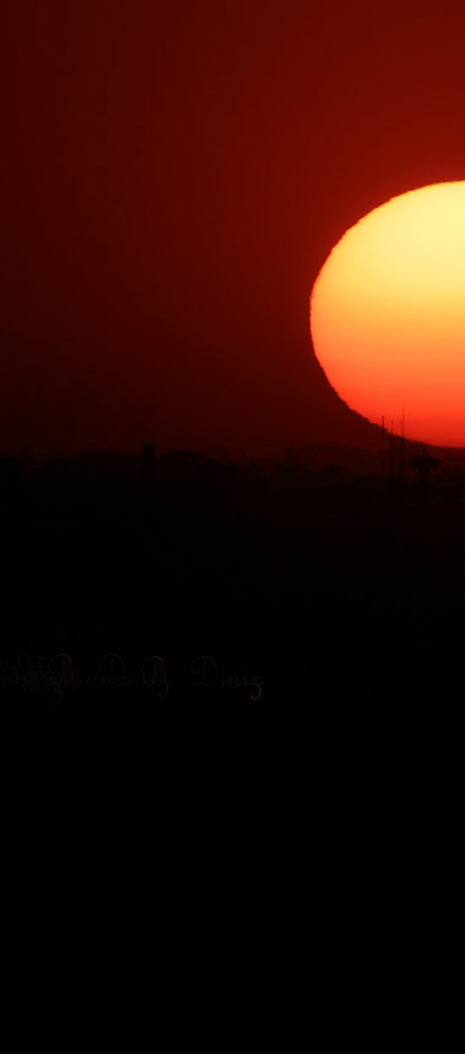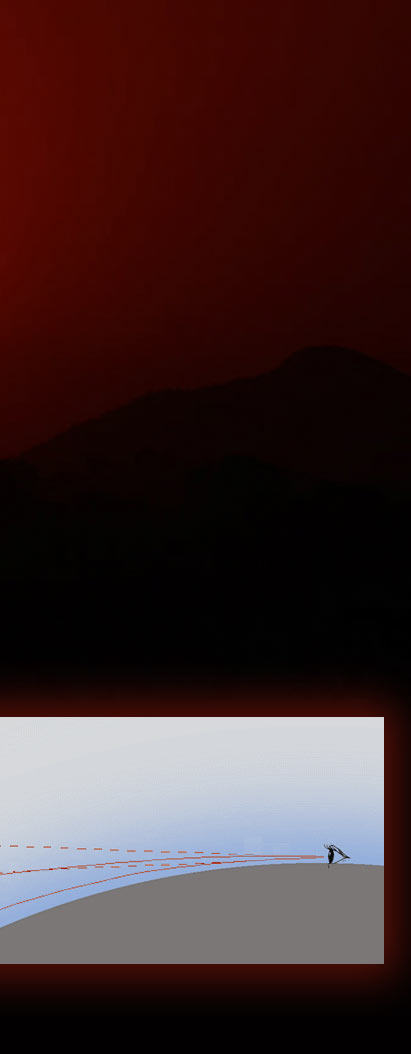We see many pictures of miraged suns, sometimes with green flash finales, that the serenity of an 'ordinary' sunset can be welcome. Even then we have visual evidence of Earth�s dense atmosphere by its reddening and refraction. The sun�s globe - its slow rotation hardly alters its gravitational sphericity - is significantly flattened with the degree of flattening increasing towards the horizon.
The atmosphere�s density does not of itself lead to any refractive distortion. The distortion arises from the density gradients of an atmosphere thinning with increasing distance from Earth�s surface.
Rays of the setting sun almost parallel to Earth�s surface are refracted into a curve, concave towards Earth�s centre. Refracted rays always tend towards the denser medium. The result of the curvature is that - to the eye - the rays appear to come from a point higher in the sky. The apparent sun is raised. Rays from the sun�s lower limb pass deeper in the atmosphere and through stronger density gradients. They are more strongly curved and the lower limb is thus raised more than the upper making the disk appear flattened.
The extent of apparent raising depends on temperature and pressure and cause the actual time of sunset and sunrise to differ by minutes from the almanac value. These effects are greatest in polar regions giving rise in extremis to the Novaya Zemlya effect where the sun can appear days before its expected first spring sunrise.
Extreme refraction is also evident from high aircraft and spacecraft when the Sun or Moon�s rays traverse the atmosphere twice before reaching the eye.
|








